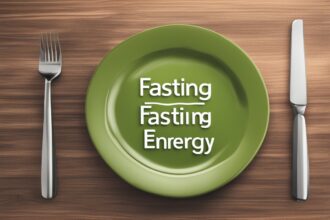Fasting, whether for religious, health, or personal reasons, can be a transformative practice. However, one common challenge many face during fasting is a dip in energy and stamina. If you’re looking for ways of boosting stamina during fasts, you’re in the right place. This guide will explore practical strategies to maintain your energy levels, enhance endurance, and make the most of your fasting journey without compromising your well-being.
Understanding the Impact of Fasting on Stamina
Fasting, by design, restricts calorie intake, which can lead to temporary declines in energy as the body adapts to using stored resources like glycogen and fat for fuel. Initially, you might feel sluggish or fatigued, especially if your body isn’t accustomed to fasting. However, with the right approach to boosting stamina during fasts, you can minimize these effects. The key lies in understanding how fasting shifts your metabolism and preparing your body to handle the change efficiently. Staying hydrated, managing stress, and prioritizing rest are foundational steps to maintaining stamina.
Hydration: The Cornerstone of Energy During Fasting
Dehydration is a primary culprit behind low stamina during fasting. When you’re not eating, it’s easy to forget about fluid intake, especially if your fast includes abstaining from water for certain periods (like during Ramadan). However, during non-fasting hours or for fasts that allow water, prioritize hydration. Water helps transport nutrients, regulate body temperature, and prevent fatigue. Aim to drink at least 8–10 glasses of water during permitted hours. Adding electrolytes through natural sources like coconut water (if allowed) can further support energy levels. For more on hydration strategies, check out our post on Hydration Tips for Fasting.
Nutrient-Dense Meals for Sustained Energy
What you eat before and after fasting periods plays a critical role in boosting stamina during fasts. Focus on nutrient-dense foods that provide slow-release energy. Complex carbohydrates like oats, quinoa, and sweet potatoes, paired with healthy fats from avocados or nuts, can keep you fueled for longer. Include protein-rich foods such as eggs, lentils, or lean meats to support muscle repair and prevent fatigue. During breaking-the-fast meals, avoid overloading on sugary or processed foods, as they can cause energy spikes followed by crashes. For meal planning ideas, explore our guide on Balanced Meals for Fasting.
Light Physical Activity to Enhance Endurance
While intense workouts may not be ideal during fasting, light physical activity can actually help in boosting stamina during fasts. Activities like walking, yoga, or stretching improve circulation, reduce muscle stiffness, and elevate mood through endorphin release. Schedule these activities during cooler parts of the day or after breaking your fast to avoid exhaustion. Avoid overexertion, as it can deplete your energy reserves. If you’re unsure about exercise during fasting, read our detailed piece on Safe Exercise During Fasting for tailored advice.
Mental Strategies to Combat Fatigue
Fatigue during fasting isn’t just physical—it’s often mental as well. Stress, boredom, or irritability can sap your stamina just as much as hunger. Practice mindfulness techniques like deep breathing or meditation to stay calm and focused. Set small, achievable goals for the day to maintain a sense of purpose. Additionally, ensure you’re getting enough sleep, as rest is crucial for energy restoration. If mental fatigue persists, consider journaling or connecting with a supportive community. Our article on Mental Health and Fasting offers deeper insights into managing emotional well-being during fasts.
Timing and Planning: Key to Sustaining Stamina
Strategic timing can make a significant difference in boosting stamina during fasts. If your fasting schedule allows flexibility, align physically demanding tasks with periods when you’re likely to feel most energized, such as after a pre-fast meal or early in the day. Plan your day to include rest breaks, especially during peak hunger or fatigue hours. For intermittent fasting, experiment with fasting windows that suit your lifestyle—some find a 16:8 schedule (16 hours fasting, 8 hours eating) easier to sustain than longer fasts. Proper planning ensures you’re not caught off guard by energy dips. For more on fasting schedules, see our guide on Intermittent Fasting Schedules.
Disclaimer: The information provided in this article is for educational purposes only and should not be considered medical advice. Fasting can affect individuals differently based on health conditions, age, and lifestyle. Always consult a healthcare professional or nutritionist before starting any fasting regimen or making significant changes to your diet or exercise routine, especially if you have underlying medical conditions or are pregnant or breastfeeding.
References
- Harvard Health: Intermittent Fasting – Surprising Update
- Mayo Clinic: Fasting Diet – What You Need to Know
- NCBI: Effects of Fasting on Energy Metabolism
- WebMD: Fasting Diets – What You Need to Know
- CDC: Plain Water – The Healthier Choice
This content is for informational purposes only and not a substitute for professional advice.






